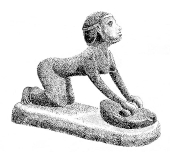posted 1 month ago
Andrew -
Could you post a photo or two of the modified mill? I think I mostly followed your verbal description, but am a little fuzzy on the details of regrinding the burr plate. A picture worth a thousand words, etc.
Perhaps we could also explain, for those who are unacquainted, that Prussian blue is a chemical precipitate, blue in color, which has a fairly tight distribution of particle sizes. It makes a very nice blue oil paint when mixed in an oil carrier, but is used by mechanics and machinists to check fits between parts, to very close tolerances (due to the small particle size) in places where you can't otherwise see or measure. Practically, one smears a thin layer on one of the parts, places the parts in contact, separates the parts, and then looks for places the blue paint transferred from one piece to the other. The locations with blue on them are high spots, which can be removed (by grinding, hand scraping or whatever), then it's lather-rinse-repeat.
We just used this process at work a couple of weeks ago to ensure that the telemetry pack we were fitting to a gear (actually, several of them) only touched at the intended mounting locations and nowhere else. After discussing with the machinist, we decided that this was the surest way of verifying that we had sufficiently cleaned up the rough forged surface of the gear webs.
Using Prussian blue is old fashioned tech, but is still very useful (if a bit messy - the Prussian blue tends to get everywhere if you aren't careful). There are other "transfer media" (as Prussian blue is classified) as well - compounds of chromium and lead, finely ground - but Prussian blue is a common, non-toxic one. For very close fitting of parts (to millionths of an inch) I've seen references in old (WWI era) machinist's manuals to using naphtha as the transfer medium (which will evaporate, so quick work is needed). Surprisingly, with skilled hands (which I personally don't have), a good scraping hand can work to precision tolerances which far exceed the precision for commonly available machine tools, entirely by hand methods. If anyone is curious about this, I can recommend tracking down a copy of "Foundations of Mechanical Accuracy" by Moore, which will provide more than enough for even most engineers on the process of bootstrapping mechanical precision from nothing.
"Ah, but a man's reach should exceed his grasp,
Or what's a heaven for?"
Andrea del Sarto by Robert Browning


 6
6
















 5
5




 4
4
















 4
4




 4
4




 4
4










 6
6
















 6
6










